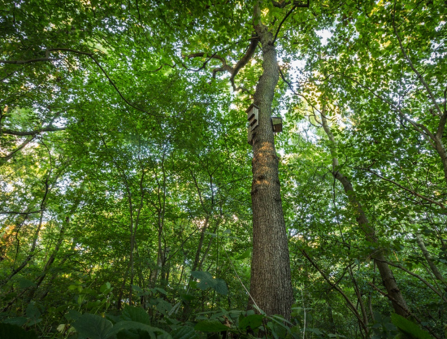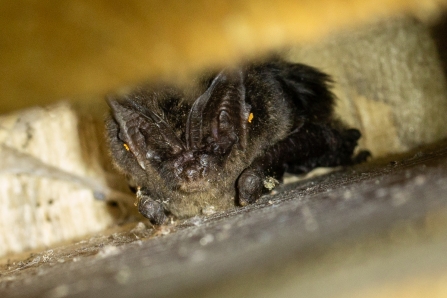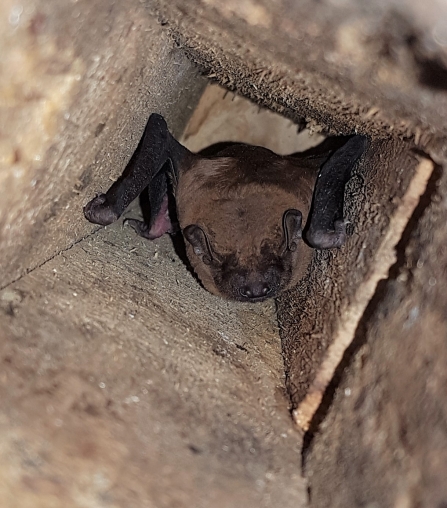
A few of the bat boxes of Ploughman Wood. They are installed three per tree to provide different aspects and temperatures
The Nottinghamshire Bat Group installed a number of bat boxes in Ploughman Wood in 2014 to provide bat roosting sites and to allow us to discover which species use the wood. Three types of box were installed; the standard bat box (similar to a bird box but with a slot at the bottom rather than a hole at the front), Kent bat boxes which have two narrow crevices which replicate the cracks of an old tree, and some hibernation boxes which are made of very thick wood with a very narrow internal chamber which are similar to old woodpecker or rot hole in a tree trunk.
We found our first bat, a soprano pipistrelle, the following year and in September 2016 were very surprised to find two barbastelle bats together in one of the boxes. Barbastelle are a very rare species in Britain and were only recorded in Nottinghamshire for the first time in 2011 at a site about 5 miles away from Ploughman Wood. The Nottinghamshire population are at the northernmost edge of their range in the UK and have been recorded on bat detectors at several new locations in the county over the last five years.



